There’s no such thing as a perfect job, marriage or retirement life. We can always aim for perfection, but most mature adults soon realise that a ‘good enough’ situation usually suits them just fine.
When it comes to retirement, the ‘good enough’ framework means hitting your own particular ‘sweet spot’. This involves
- having enough income to feel comfortable
- knowing that you are continuing to live within your means, and
- having peace of mind that there are no nasty financial surprises around the corner.
If this sounds like your sort of sweet spot, too, then how can this goal be achieved? One useful way to plan or review your retirement income options is to concentrate on a series of three very different, but related, actions.
1. Know yourself and your needs
Much of the advertising aimed at retirees shouts loudly about the opportunity to be ‘rich’. But for most of us a rich life lies not in the size of our bank accounts, but more in our relationships. Understanding your values and what you prize most highly is a great way of resetting expectations about money. Many retirees have already reached this goal. They are happy to live on a proportion of what they used to earn, and to live within their means.
There’s a caveat here, of course. You need to know what you need to earn in order to cover your outgoings. Sooner or later retirees need to live within a new post-work budget. Having a clear idea of how much you are spending is a critical platform on which future income planning can be based. By knowing how much you spend and on what, you can also make judgement calls if you need to trim spending at any time. Or, conversely, if your savings are barely touched by your retirement income stream, you may choose to spend more. So action point one is to download your most recent bank statements which show your total expenditure for the month. Categorise items into essential, important and discretionary, and total each category. This then allows you to project across a 12-month period. There may be some adjustments necessary (i.e. if you pay rates in this month, it may actually apply to the full 12-month cost), but you get the idea. If you are living a relatively comfortable life, then you will now know how much that is costing you and you can use this knowledge to consider ways to tweak your savings, income and work to help sustain this amount. If you continually feel cash-strapped, you may wish to explore ways to spend less or to maximise your income.
Q. What happens when you’ve spent too much?
Here’s how Aaron and Julie managed to salvage their retirement after spending a lot – arguably too much – on a trip to South America.
2. Be like Goldilocks – sit in the sensible centre
Getting your retirement settings just right is the aim here. Not too hot (risky), not too cold (overly conservative), but just right. But what does this mean?
Retirement settings is an overarching term for many of the decisions you need to make about maximising your savings, husbanding them over the longer retirement journey, deciding upon super fund investment levels, and deciding whether to withdraw the minimum required amounts from super or spend at a higher level. Yes, there is a lot of complexity here, but it can be more simply reframed as:
- understanding entitlements,
- understanding how much super will be needed – at what rate – to top-up your Age Pension payments and
- understanding how to keep your savings earning consistently so that you can continue to enjoy your later years.
Using the free Retirement Essentials tools mentioned within this article can help to simplify these calculations.
There are two other important points to bear in mind:
- The Age Pension is a strong foundation for nearly two-thirds of retirees. It is government-guaranteed, indexed to keep up with inflation and wages and by their 80s, some 80% of retirees will benefit from at least a part payment every fortnight. Understanding your current and future likely entitlements is a critical part of moving toward the retirement sweet spot.
- How the Age Pension combines with super is tricky – there are a lot of rules to learn and follow – but there is one key observation that is worth sharing here. While there are mandatory minimum withdrawals from super when you start an Account-Based Pension (i.e. you enter decumulation mode), these are not mandated amounts. They are minimums that may or may not fit well with other income streams. It is possible you will live a happier retirement by withdrawing much more. Many retirees do. So it is really important to know your outgoings (as above) and to forecast different retirement spending levels to find the one that suits you the best. Many retirees make the mistake of assuming their super balance goes down every year by the amount they are required to withdraw. They forget that super in pension mode continues to earn income and often these earnings are in excess of the withdrawals – in other words, their super balance is going UP!
Q. Is there an easy way of doing these calculations?
Here’s how Ben and Mary were able to gain a better understanding of their risk tolerance and how this knowledge could be used to project sustainable retirement income over their retirement journey.
3. Understanding the rules is easier than you think
Yes, it’s true that the team at Retirement Essentials often comments on the complexity of retirement income rules – particularly those with similar names such as carry-forward contributions, bring-forward contributions and so on. The rules for each of the five pillars of retirement income (Age Pension, super, work, home equity and private savings) are indeed very detailed. But here’s the good news. You many only wish to access, say, two of the pillars at one time, for instance the Age pension and super withdrawals. At that stage of your retirement, you don’t need to understand each and every permutation of every other type of income – you only need to understand the rules that apply to your age, your stage, your household and your current savings. That insight often leads to a cut-through moment in retirement income planning. There are a lot of decisions to be made, and rules attached to all of them. But checking eligibility for an Age Pension, based upon your current savings and super, is as simple as using the free Retirement Essentials Age Pension Eligibility Calculator. Projecting how this entitlement will ‘layer’ with your super and other income (including wages) can be achieved quickly by using the Retirement Forecasting tool. These digital tools have been specifically designed for Australian retirees to deliver quick and accurate forecasts based upon Australian Government legislation.
Q. Why is it important to tackle my possible entitlements sooner rather than later?
Putting things off because you think it sounds complicated or just too hard is usually not the smartest move. Here’s what happened with Geoff.
What next?
Would you like support to assess your current spending and see if this is sustainable across your retirement years? To learn more about your risk tolerance and how this affects your ability to fund a comfortable lifestyle? Or to gain a better understanding of ways to use Centrelink and super rules to maximise your income? Learn more about these different types of Retirement Advice Consultations here. They offer an extremely affordable way to make the most of your savings.
What about you?
Do you believe you have found your ‘sweet spot’?
If so do the three steps above make sense – or did you use a different planning process?
This article is provided by Retirement Essentials Representative Number: 001260855. We are an authorised representative of SuperEd Pty Ltd ABN 88 118 480 907 AFSL #468859. This information is not intended as financial product advice, legal advice or taxation advice. It does not take into account your personal situation, goals or needs and you should assess your own financial situation, consider if the information is suitable for you and ensure you read the relevant Product Disclosure Statement (PDS) if you choose to make any changes to your financial situation. It is always advisable to consult a financial adviser before making financial decisions.






The sweet spot is where your assets mean you receive the maximum Centrelink aged pension. Bolstered by super income pension. Those who don’t qualify for Centrelink aged pension due to assets are discriminated against.